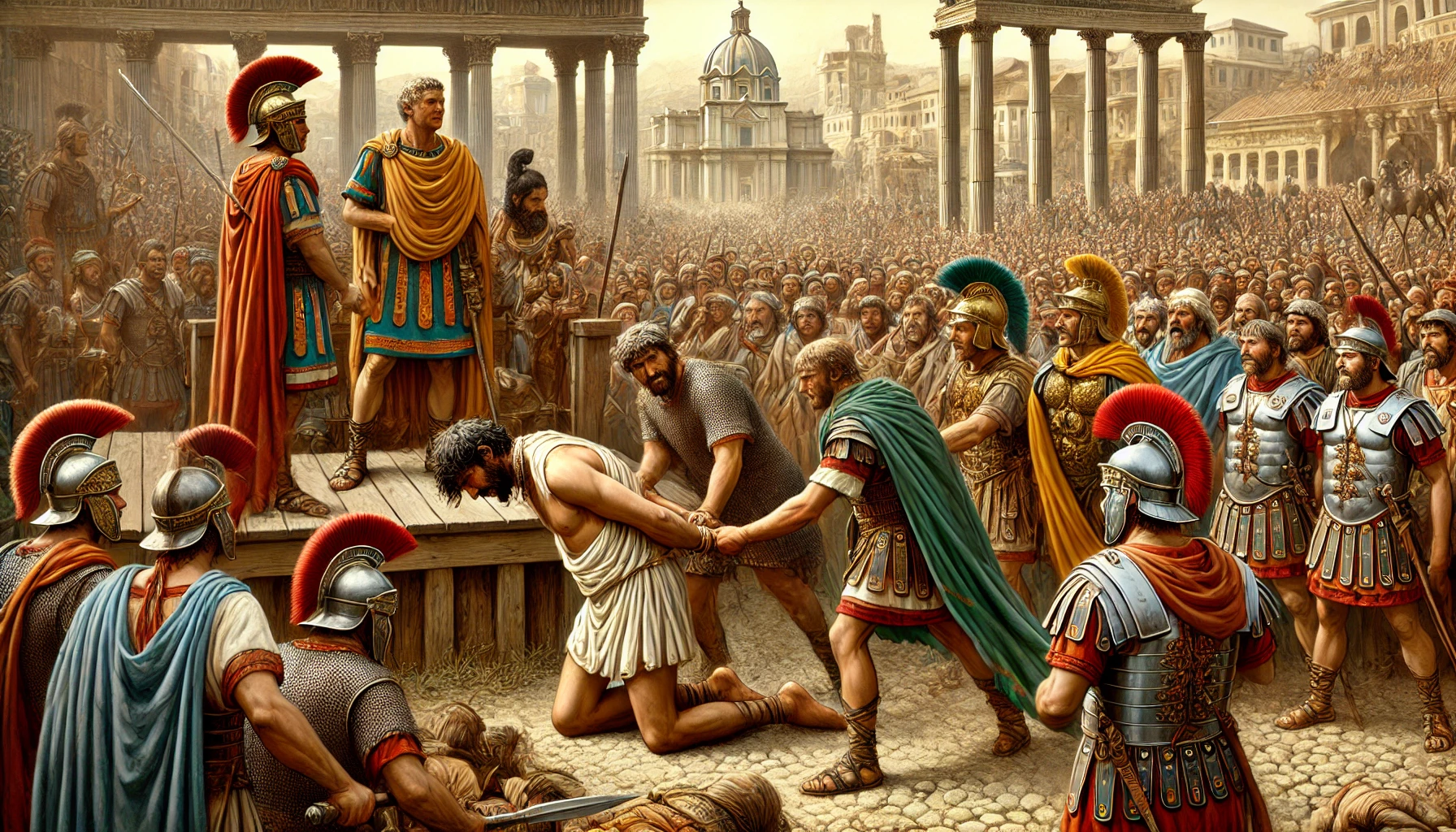The Rise of Vercingetorix
Vercingetorix, a chieftain of the Arverni tribe, emerged as the leader of the Gallic resistance against Rome in 52 BC. Uniting rival tribes under a single command, he waged a fierce campaign against Julius Caesar’s legions, employing scorched-earth tactics and guerrilla warfare to weaken the invaders.
The Siege of Alesia: Rome’s Triumph
The decisive moment came at the Battle of Alesia, where Caesar laid siege to the fortified Gallic stronghold. Despite Vercingetorix’s strategic defenses and reinforcements from allied tribes, the Romans constructed double walls to encircle the city. After weeks of starvation and relentless attacks, Vercingetorix surrendered, hoping to save his people from total annihilation.
Vercingetorix’s Imprisonment
Following his surrender, Vercingetorix was taken to Rome in chains. For six years, he was held in a dungeon, awaiting his fate. Meanwhile, Julius Caesar solidified his political power, ultimately declaring himself dictator.
The Execution: A Roman Spectacle
In 46 BC, as part of Caesar’s grand triumph celebrating his victory over Gaul, Vercingetorix was paraded through the streets of Rome. The spectacle culminated in his execution, likely by strangulation, in the Tullianum prison. This marked the end of Gallic resistance and the complete Romanization of Gaul.
The Legacy of Vercingetorix
Though he was defeated, Vercingetorix became a symbol of resistance against oppression. His story was later revived in French history as an emblem of national pride. His legacy endures as one of the greatest opponents Rome ever faced.






